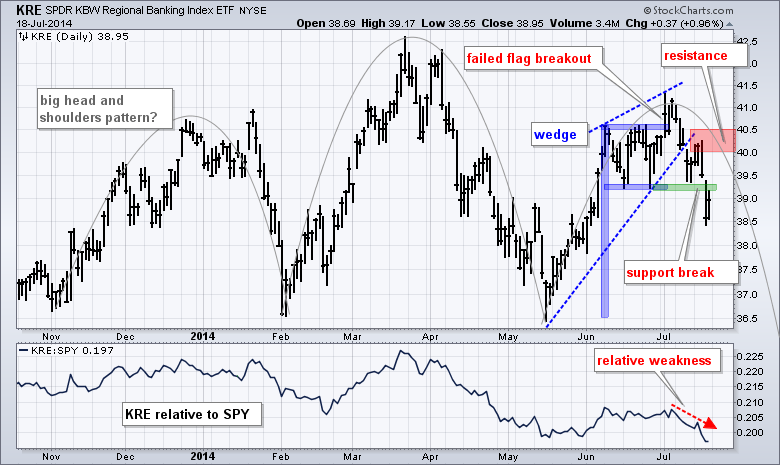The Regional Bank SPDR (KRE) failed to hold its flag breakout and then broke support with a sharp decline this week. It would now appear that KRE formed a rising wedge that peaked below the January high. This week's wedge break signals a continuation of the prior decline and projects a move below the May low. This week's high and the trend line break to mark a resistance zone in the 40-40.5 area. With the upswing reversed, chartists can also consider a larger bearish pattern taking shape. Combined with a relatively equal high in January, a large head-and-shoulders reversal pattern could be taking shape with neckline support in the 36.5 area.
The overall stock market remains strong with the S&P 500 near all time highs and the Finance SPDR (XLF) hitting a 52-week high this month. Why are regional banks underperforming and breaking down? The spread between the 10-year Treasury Yield ($UST10Y) and the 2-year Treasury Yield ($UST2Y) may be to blame. The second chart shows a 1.99 difference between these two yields, which means the 10-year Yield is 1.99% more than the 2-year Yield. The yield curve is still very positive and this bodes well for the economy overall, but the difference between the two has narrowed significantly this year. The 10-year Yield fell, the 2-year Yield rose and the Yield Curve 10YR - 2YR ($YC2YR)) fell to its lowest level since June 2013. Banks make money by borrowing at short-term rates, lending at long-term rates and capturing the difference. This difference is less and this could be weighing on regional banks. A break above 2.2 in the Yield Curve (10YR - 2YR) would suggest that the spread is widening again and this would be positive for regional banks.
Good trading and good weekend!
Arthur Hill CMT








